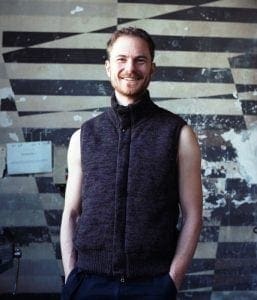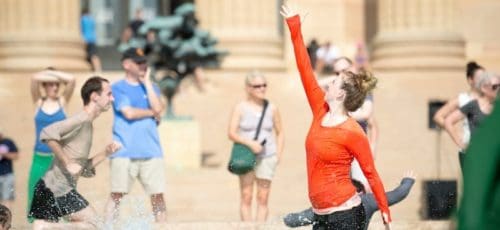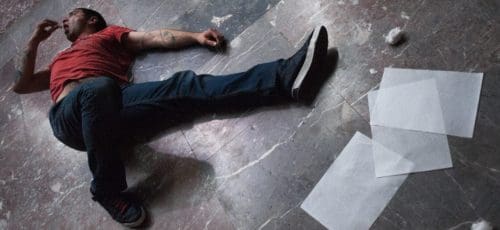Excerpts from the Manifesto for a Dancing Museum by Boris Charmatz
This weekend’s performances of manger are part of a larger project, the Philadelphia Museum of Dance, copresented by Drexel University’s Westphal College of Media Arts & Design with FringeArts and the Barnes Foundation. The project presents Charmatz’s ideas for a new kind of dance and a new relationship between dance and public. He explains these ideas in his Manifesto for a Dancing Museum, excerpted below.
—
It seems to me that the designation “Museum, Dancing Museum” could function like a door flung wide open to culture and the art of dancing that we will not change into a sanctuary.
 (…) Dance and its actors are often defined in opposition to the arts that are said to be perennial, lasting, static, for which the museum would be the favourite place. But today if one wants to stop obscuring the historical space, culture and choreographic heritage, even the most contemporary, then it is time to see, to make visible and bring alive the moving bodies of a culture which largely remains to be invented. And if one wishes the choreographic tradition to pursue the new technological trends and truly embrace the trans-media space of the contemporary world, then it seems to me that under the designation of “Museum” the artists will be able to have fun and create freely.
(…) Dance and its actors are often defined in opposition to the arts that are said to be perennial, lasting, static, for which the museum would be the favourite place. But today if one wants to stop obscuring the historical space, culture and choreographic heritage, even the most contemporary, then it is time to see, to make visible and bring alive the moving bodies of a culture which largely remains to be invented. And if one wishes the choreographic tradition to pursue the new technological trends and truly embrace the trans-media space of the contemporary world, then it seems to me that under the designation of “Museum” the artists will be able to have fun and create freely.
To not cut the matter short, ten commandments:
a micro-museum
but a real one. It fully embraces its museum tasks and maintains a balance between its various functions of conservation, creation, research, exhibition, diffusion, raising of public awareness, mediation, without neglecting any of them. Such interdependence is what justifies the creation of a museal structure.
a museum of artists
researchers, collectors, curators, exhibition commissioners participate in the life of the museum, but above all it is essentially artists who invent it by creating works. It is therefore an artistic project initiated by Boris Charmatz, but produced by numerous artists.
an eccentric museum
it intends to be an introduction, an appetizer, a place for enhancing public awareness of dance and choreographic culture in the broadest sense, of the history of the body and its representations. However, it is not centred exclusively on choreographic art: it does not seek to establish a taxonomy of dance, its goal is not to offer a settled definition of the subject. Its ideal isn’t to give an exhaustive representation either of the different dances performed around the world. It wishes to stimulate the desire for knowledge.
an incorporated museum
it can only develop provided that it is built by the bodies moving through it, those of the public, the artists, but also of the museum employees (attendants, technicians, admin staff, etc.), who bring the works to life, even becoming actors themselves.
a provocative museum
it approaches dance and its history through a resolutely contemporary vision. It spends time questioning the ingenuous knowledge everyone has about dancing. It induces unlikely links, confrontations between worlds usually poles apart from one another. It questions the accepted conventions that circulate about dance… and therefore elsewhere in society.
a transgressive museum
it fully acknowledges the fact that its activity does not limit itself to the quest for and the representation of the “authentic” object; it encourages artists and visitors to make works their own, it stimulates plagiarism. Artistic creation and the visitor’s experience are at the core of its action. Being a place of life, a social space for controversy, a place for talking and interpretation, it is not only a space for accumulation and representation.
a permeable museum
it defends the principle according to which an openness to a broader concept of dance means allowing other movements to influence us, to leave behind a fixed identity. To open up to difference.
a museum of complex temporalities
it deals with both the ephemeral and the perennial, the experimental and the patrimonial. Active, reactive, mobile, it is a viral museum which can be grafted onto other places, can spread dance in places where it was not expected. It is also a museum with a programme evolving with the rhythm of seasons, able to relocate to beaches in the summer period or to propose a winter University…
a cooperative museum
it is independent, but works in connection with a network of partners, cooperates with institutions linked to dance (contemporary, classic and traditional, scholarly and popular), to museums, to art centres and galleries, to research centres and universities, and it in no way sets itself against them. It builds deep relationships with individuals, whether they be artists of international fame like Mikhail Baryshnikov, Steve Paxton, William Forsythe, or passionate amateurs.
an immediate museum
it exists as soon as the first gesture has been performed.
— Boris Charmatz



